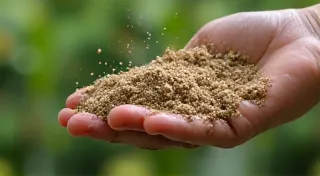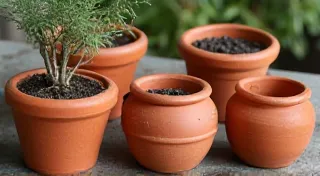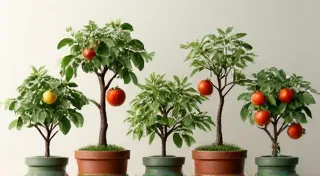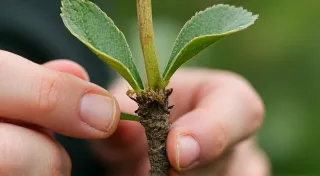Pruning and Fertilizing Dwarf Fruit Trees in Containers: A Seasonal Guide
Growing dwarf fruit trees in containers offers the joy of fresh, homegrown fruit even with limited space. To ensure abundant fruit production and maintain their compact size, proper pruning and fertilizing are essential. This seasonal guide will provide you with the best practices for each stage of growth.
Why Prune and Fertilize Dwarf Fruit Trees in Containers?
Pruning shapes the tree, encourages fruiting wood development, improves air circulation (reducing disease risk), and helps maintain a manageable size suitable for containers. Fertilizing provides the nutrients essential for healthy growth, strong branches, abundant blossoms, and ultimately, delicious fruit. Container-grown trees rely entirely on you for these vital elements. Selecting the right dwarf variety is also crucial for success, and resources like choosing dwarf fruit tree varieties for containers can provide excellent starting points.
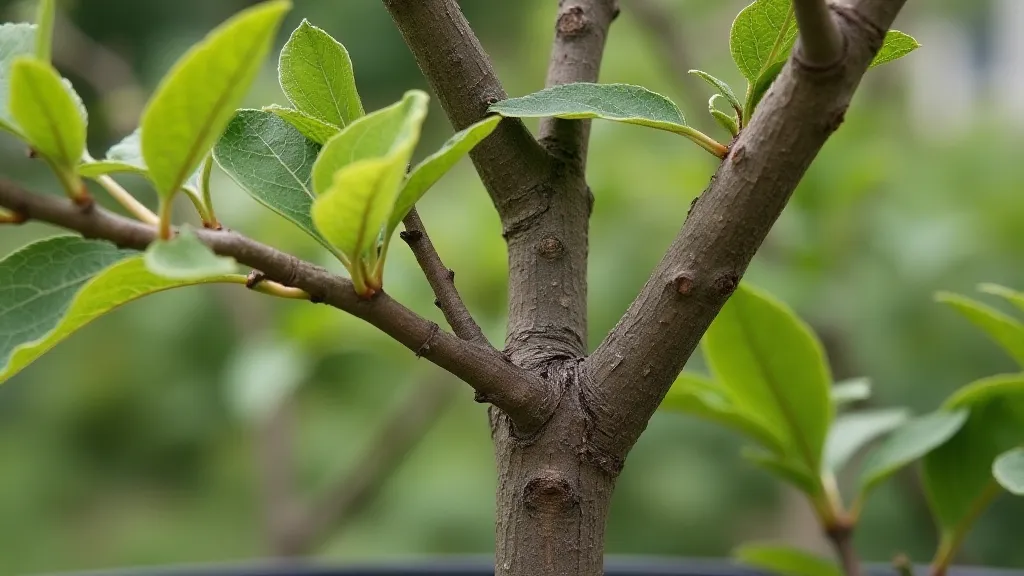
Seasonal Pruning Guide
The timing and type of pruning depend on the fruit tree variety and the time of year. Understanding the nuances of pruning, and ensuring you’re maintaining the proper shape and encouraging fruiting, is key to success. For more details on specific pruning techniques, consult articles like pruning dwarf fruit trees in containers.
Dormant Pruning (Late Winter/Early Spring - February/March)
This is the most important pruning time. While the tree is dormant (before buds swell), you can make significant cuts without harming the tree. Focus on the following:
- Removing Dead, Damaged, or Diseased Wood (DDD): Always start here!
- Thinning Branches: Remove branches that cross or rub against each other. This improves air circulation and light penetration.
- Heading Cuts: Shorten branches to encourage branching and control size. Be cautious – excessive heading cuts can stimulate excessive vegetative growth (leafy branches) at the expense of fruit.
- Training: Shape the tree to a desired form (e.g., central leader, open vase).
Light summer pruning can help control vigorous growth. Remove watersprouts (vertical shoots growing straight up) and suckers (shoots emerging from the base of the tree). Avoid heavy pruning during the growing season as it can reduce fruit production. Ensuring your tree receives adequate sunlight is also important; understanding how to map microclimates in your garden can be invaluable. You may find the insights on cartography of sunlight: mapping microclimates quite helpful.
Seasonal Fertilizing Guide
Container-grown fruit trees need more frequent feeding than those in the ground because nutrients are leached out with watering. A balanced fertilizer specifically formulated for fruit trees is recommended. The health of your tree's root system is inextricably linked to its overall well-being; consider the benefits of regular repotting to ensure optimal conditions.
Spring (Bud Break - April/May)
Apply a slow-release fertilizer at the recommended rate on the label. This provides a steady supply of nutrients throughout the active growing period. Consider a fertilizer with a slightly higher phosphorus (P) content to encourage strong root development and flowering.
Early Summer (After Flowering - June)
A liquid fertilizer can be applied, diluted to half strength, to provide a boost to young fruit development. Look for a fertilizer with a balanced NPK ratio (Nitrogen, Phosphorus, Potassium). Repotting becomes increasingly important as your dwarf fruit tree matures, and regularly adjusting the container size ensures sufficient space for root expansion and nutrient uptake.
Late Summer (Fruit Ripening - August/September)
A final application of slow-release fertilizer helps the tree store energy for the winter and prepare for next year's growth. You can also use a potassium-rich fertilizer to help with fruit ripening and sweetness.
Fall (After Harvest - October/November)
Avoid fertilizing heavily in the fall. A light application of potassium can be beneficial, but avoid nitrogen, as this can stimulate new growth that won’t harden off before winter. Consider the timing of your repotting schedule to coincide with the dormant period, providing a less stressful transition for the tree.
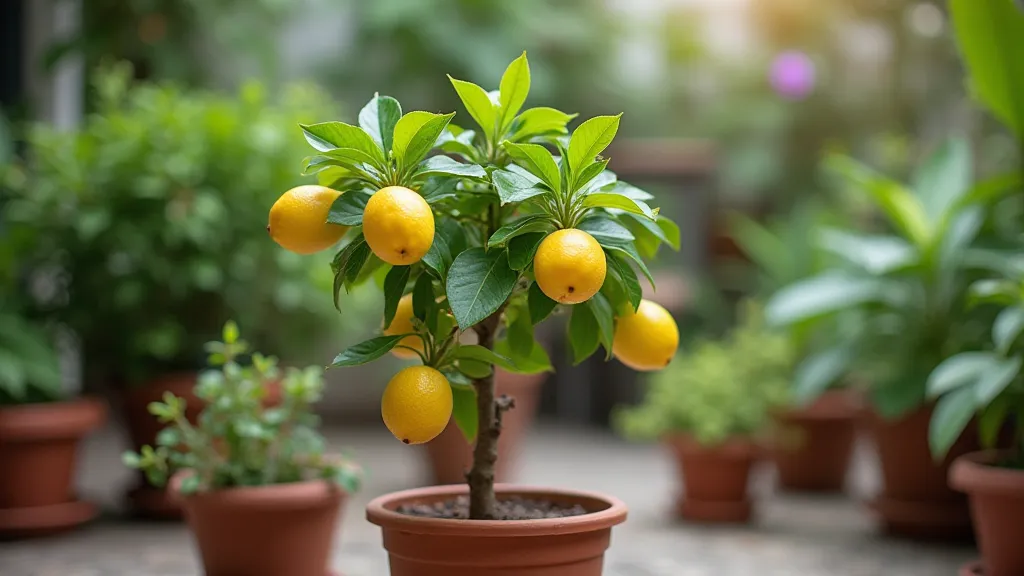
Important Considerations for Container Growing
Successful container gardening requires more than just pruning and fertilizing; it's a holistic approach encompassing every aspect of the tree’s environment. Proper drainage, sunlight exposure, and timely repotting are all vital components.
- Potting Mix: Use a high-quality potting mix designed for containers. It should be well-draining and provide good aeration. Cheap potting mixes often compact, restricting root growth and hindering nutrient absorption.
- Watering: Container-grown trees dry out more quickly, so water regularly, especially during hot weather. Overwatering, however, can lead to root rot, so ensure the pot has adequate drainage holes.
- Repotting: As the tree grows, it will need to be repotted into a larger container. Repot every 2-3 years, or when roots become pot-bound. A pot-bound tree struggles to absorb water and nutrients, impacting growth and fruit production. For detailed guidance on this process, refer to repotting your dwarf fruit trees in containers.
- Sunlight: Dwarf fruit trees need at least 6-8 hours of sunlight per day. Insufficient sunlight leads to weak growth and reduced flowering.
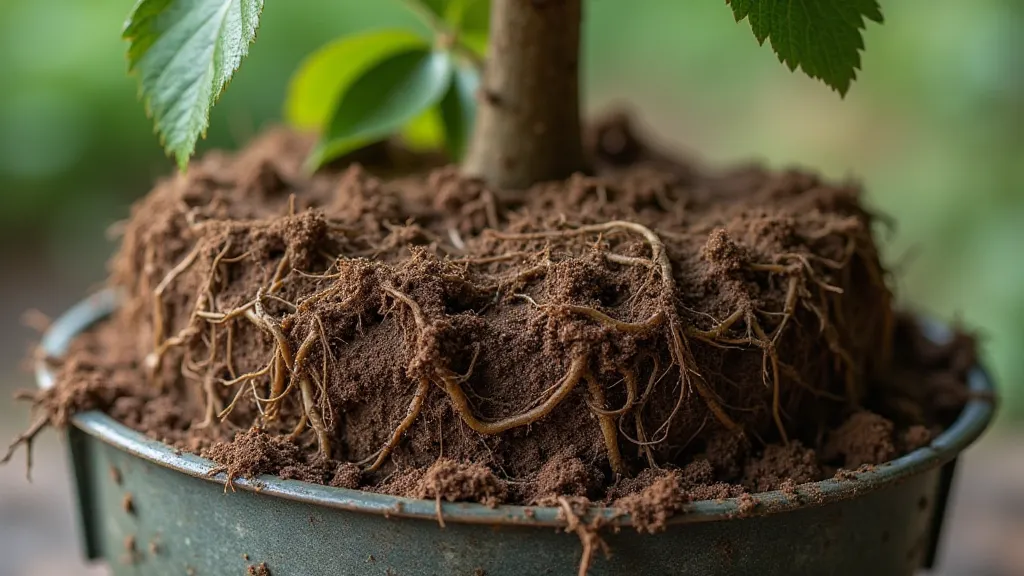
Troubleshooting Common Issues
Even with diligent care, you might encounter challenges. Yellowing leaves could indicate nutrient deficiencies or overwatering. Spots on the leaves might signal fungal diseases, which can be managed with appropriate fungicides. Stunted growth often points to root-bound conditions or inadequate sunlight.
Expanding Your Container Fruit Garden
Once you’re comfortable growing a few dwarf fruit trees, consider expanding your collection. Different varieties offer diverse flavors and textures, and a mix of trees can create a visually stunning display. Experiment with different container sizes and shapes to add visual interest to your patio or balcony.
Conclusion
With a little attention to pruning and fertilizing, you can successfully grow delicious dwarf fruit trees in containers, even with limited space. By following this seasonal guide, you'll be well on your way to enjoying a bountiful harvest for years to come. Remember that consistent observation and adaptation are key to long-term success in container gardening. Every tree is unique, and what works for one might not work for another, so be prepared to adjust your approach as needed.


